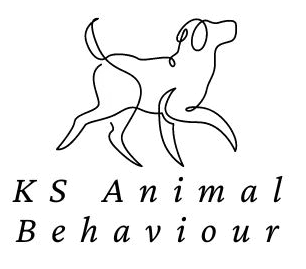

Provisional Association of Pet Behaviour Counsellors (APBC) Member
⭐️⭐️⭐️⭐️⭐️ 20+ 5-star reviews from Satisfied dog owners
Positive, Force-Free Dog Training in Norfolk
Foster a Deeper Bond Through Positive Training
Training tailored to your dog's unique personality and needs
Expertise from a highly qualified, positive reinforcement trainer
Techniques that build confidence and trust between you and your dog







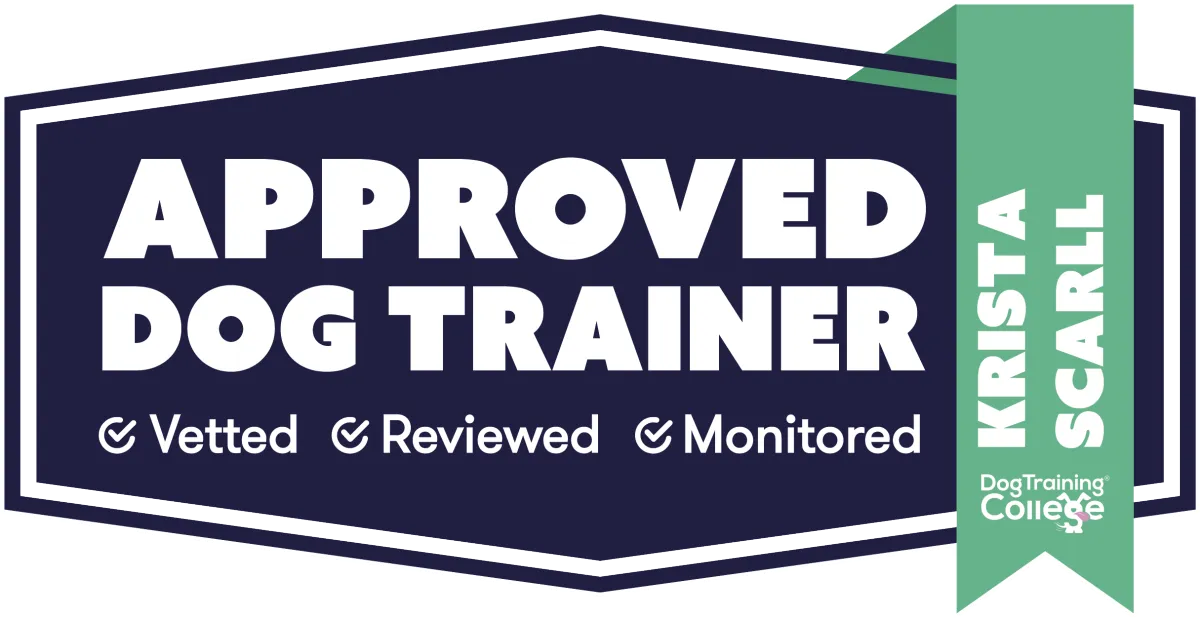
One-to-One Positive Training Sessions
Tailored, Compassionate Training for Your Dog
Experience the difference of individualised, force-free training with KS Animal Behaviour, dedicated to enhancing the bond between you and your dog in Norfolk.
Behaviours and How the trainer can help
Recall Enhancements
Build a joyful recall where your dog happily returns to you amidst distractions.
Lead Walking Joy
Teach your dog the joys of walking calmly beside you, without the strain of pulling.
Greeting Manners
Encourage polite greetings, transforming over-excitement into calmness.
Puppy Foundations
Start your puppy on the right paw with essential skills and positive socialisation experiences.
Behavioural Enrichment
Deepen your understanding and response to your dog's needs, promoting a harmonious living environment.
Help Your Self to A FREE Book
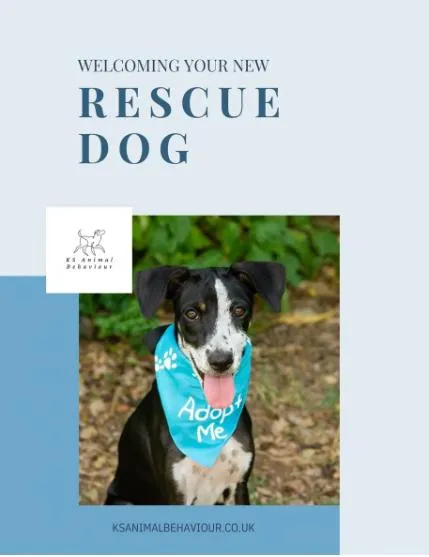
Welcoming Your New Rescue Dog

Confidence Building Guide For Dogs
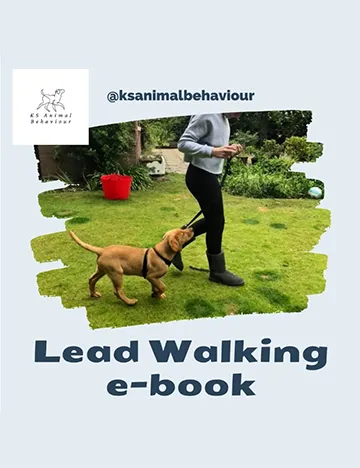
Lead Walking
Discover the Power of Positive Training
Why KS Animal Behaviour is Your Choice for Dog Training in Norfolk
Choosing the right training approach for your dog can dramatically affect your life together. KS Animal Behaviour believes in a force-free, positive reinforcement strategy that strengthens the bond between you and your dog, ensuring a happier and more relaxed home environment.
The path to a well-behaved dog should never be paved with frustration or misunderstanding. Traditional methods focusing on correction and obedience can strain the relationship with your pet. KS Animal Behaviour's modern, science-based approach emphasises understanding, patience, and positivity, fostering trust and a deeper connection. We celebrate every step forward, understanding that each milestone is a triumph in your shared journey.
Imagine walks filled with laughter, home life brimming with peace, and a relationship with your dog built on mutual respect and understanding. This vision is attainable with KS Animal Behaviour's positive training methods. Our approach is about more than just training; it's about transforming lives through compassionate guidance and support. Let us show you the way to a joyful and fulfilling relationship with your dog.
Your Journey to a Happier Dog Starts Here
Embrace a Positive Approach to Training
Free Assessment Call: Begin with a conversation about your dog's individual needs and our approach to help.
Tailored Training Plan: Get a customised training plan that respects your dog's personality and your goals.
Continued Support: Enjoy ongoing encouragement with check-ins, ensuring progress and happiness for you and your dog.

Start Your Positive Training Adventure in Norfolk
Make the first move towards a more understanding and fulfilling relationship with your dog. Book a free assessment call with KS Animal Behaviour today and discover the impact our force-free, positive training methods can have. Together, we can achieve wonderful transformations, enhancing your life and that of your dog.
What Our Clients Say
Latest Blog Posts

What is Welfare?
What is Welfare?
Definition: the health, happiness, and fortunes of a person or group.
Animal welfare science strives to measure, regulate, and improve the quality of life for animals, encompassing ecology, evolution, neuroscience, behaviour, genetics, cognition, and consciousness (Dawkins, 2006).
Since the publication of ‘Animal Machines’ 1964, awareness of animal welfare issues became more prominent, seeing animals as living beings with feelings and inner lives rather than just something to be produced and sold. Following this, the UK government compiled The Brambell Committee (1965), outlining codes of practice (Veissier et al. 2008; Appleby et al. 2011; Brambell Committee, 1965; FAWC, 2009). This influenced the Treaty of Amsterdam 1999 which acknowledged animals’ sentience, and animal welfare legislation across Europe and the UK, such as the Animal Welfare Act 2006, which pioneered The Five Freedoms.

The Five Freedoms are internationally accepted standards of care developed by the UK's Farm Animal Welfare Council and are an integral part of the Animal Welfare Act 2006. They aim to ensure that the mental and physical needs of animals in the care of humans is maintained.
How do these apply to dogs and training?
1. Freedom from hunger and thirst.
This includes not suffering from prolonged hunger or thirst - this raises concerns with some dog trainers suggesting that you withhold food (and even sometimes water) for training to increase the dog's motivation.
However a study known as "the breakfast effect" disputes this theory that training your dog on an empty stomach will gain better results.
The study looked at three control groups:
Group 1: No food
Group 2: Food 30 mins prior
Group 3: Food 90 mins prior
Dogs were then required to perform two tasks - sit for 10 minutes and find hidden pieces of food.
The study found that dogs who had been fed 30 mins prior performed the best, and the dogs who has been fasted performed the worst.This suggests that withholding food before training is actually detrimental to training performance.
2. Freedom from discomfort
This freedom largely concerns the animals environment, ensuring that they are comfortable in terms of shelter, temperature and resting places.
There are a few things to consider here.
Animals should have comfort when resting - this means providing suitable bedding that is supportive, considering individual needs such as older dogs needing more supportive resting areas and other adjustments to their environment such as ramps, raising feeding bowls etc.
Animals should have enough space to move freely - this raises concerns for shelter dogs of course, but shelters are generally aware of this, providing adequate space within the kennel and additional exercise areas. What may be more of a concern here are crating practices within pet homes (and of course back yard breeders and puppy farms - however there's a whole host of welfare issues there).
Crating is a useful management practice, particularly with puppies, it prevents them from practicing unwanted toileting, chewing and general destructiveness. Crating definitely has it's place in dog training and behaviour, however there are some considerations to ensure that the dog is free from discomfort.
The size of the crate should be appropriate, the dog should be able to stand and move comfortably. Another important consideration is how long the dog is left in the crate and access to resources. Within the crate dogs should have access to water at all times, there are so many options now to prevent spillages. The dog should not be left in the crate for longer than they are comfortable with - this means plenty of opportunities to leave the crate for toileting opportunities, exercise, enrichment and general movement. I have seen some frankly horrendous training advice that dogs should be left in the crate for 23hrs out of the day, this is completely unethical and hugely detrimental to their welfare. Other advice I have seen being given regarding crating is the 'let them cry it out' method for separation and nighttime routines suggesting that you are setting boundaries and teaching the dog that crying "doesn't get it what it wants".
It is important to remember here that dog's are not evil geniuses trying to manipulate you, they are purely behaving in a way that indicates how they are feeling internally. If your dog is crying when left or in their crate, it is highly likely that they are scared - either of confinement or being alone.
If you leave your dog to cry it out, all they are learning is that being in the crate/alone is SCARY.
Your dog may eventually stop crying, but not because they feel better, but because they are in a state of learned helplessness - this is similar to depression in humans. The dog will still be feeling fearful and their trust in you will be broken, damaging your relationship with your dog. The feelings will be manifested in other behaviours.
There is also the issue of pieces of equipment such as prong collars, e-collars, slip leads, grot collars, choke collars etc. that rely on positive punishment to change behaviour.
Positive punishment adds something to a behaviour to make it less likely to be repeated in the future, by the nature of this it has to be something that the dog wants to avoid in future, so something that causes discomfort, or even pain or fear. Studies have shown that dogs who have been trained with these methods become more anxious, pathological and potentially more aggressive and dangerous depending on the issues (Overall, 2007). Again this suppression of behaviour causes "immobility" which is the same as learned helplessness.
So we can conclude here that the consideration of the equipment that we use with our dogs falls under the five freedoms of animal welfare - with aversive equipment and methods posing a significant risk to welfare.
3. Freedom from pain, injury and disease
Another concern regarding discomfort, pain and potential injury in dogs in the different equipment people may use to walk and train. Most dogs are walked on some kind of collar/harness and lead to ensure safety and control of the dog and others around it.
We generally recommend use the of a well fitted y-shaped harness for walking dogs for several reasons.
One reason is the risk to injury and discomfort on the dog's neck from pressure from a collar. In a study by Pauli et al. (2006) it was found that intraocular pressure increased significantly when pressure was applied onto a collar, but not a harness, increasing risk to dogs with eye conditions. Another study by Carter et al. (2020) found that all collar styles tested provided significant pressure on the neck indicating a risk of injury when pulling.
4. Freedom to express normal behaviour
It is important to remember here that 'normal' behaviours are species specific, and for a dog this may include behaviours that humans find a nuicance such as:
Digging
Foraging
Barking
Sniffing
Rolling in stinky stuff
Hunting - including sniff, eye, stalk, chase, grab-bite, kill-bite, dissect, consume
Playing
Grooming
Social behaviours
While some of these behaviours can become maladaptive or inappropriate in a home environment, however it would be detrimental to the dogs welfare needs to punish them or prevent them from practicing these behaviours. Instead we can provide alternative outlets for these behaviours.
Some examples include:
Provide a sandpit or other digging area to save your lawn and your ankles, whilst providing your dog with an opportunity to dig.
Play a range of predation substitute games to fulfill their natural instincts to hunt in a safe way.
5. Freedom from fear and distress
As previously touched upon, the environments and circumstances we take our canine companions into, alongside methods we employ in their training, should be carefully considered to minimise fear and distress, and promote emotional well-being.
There are of course situations like medical emergencies that may supersede this, as this would pose more of a welfare risk to the dog, but in daily life, exposing your dog to situations, handling or other circumstances that cause them to feel fear, distress, frustration and apathy should be avoided or managed.
There are some training and handling techniques that set your dog up to fail and then use fear and intimidation to suppress the dog's behaviour, causing them significant negative affective states and causing long lasting damage to the dog physically and mentally.
Instead the dog's environment and experiences should be carefully managed, and kind, ethical training and behaviour modification techniques employed to work on the root cause of the behaviour - the underlying emotion. These techniques look to change how your dog feels and associates with the things they're struggling with so that they no longer feel the need to practice certain unwanted behaviours. These techniques promote the release of 'feel-good' chemicals in the brain making your dog happier and more confident, whilst also making them feel safe and encourage a harmonious dog-human bond.

What is Welfare?
What is Welfare?
Definition: the health, happiness, and fortunes of a person or group.
Animal welfare science strives to measure, regulate, and improve the quality of life for animals, encompassing ecology, evolution, neuroscience, behaviour, genetics, cognition, and consciousness (Dawkins, 2006).
Since the publication of ‘Animal Machines’ 1964, awareness of animal welfare issues became more prominent, seeing animals as living beings with feelings and inner lives rather than just something to be produced and sold. Following this, the UK government compiled The Brambell Committee (1965), outlining codes of practice (Veissier et al. 2008; Appleby et al. 2011; Brambell Committee, 1965; FAWC, 2009). This influenced the Treaty of Amsterdam 1999 which acknowledged animals’ sentience, and animal welfare legislation across Europe and the UK, such as the Animal Welfare Act 2006, which pioneered The Five Freedoms.

The Five Freedoms are internationally accepted standards of care developed by the UK's Farm Animal Welfare Council and are an integral part of the Animal Welfare Act 2006. They aim to ensure that the mental and physical needs of animals in the care of humans is maintained.
How do these apply to dogs and training?
1. Freedom from hunger and thirst.
This includes not suffering from prolonged hunger or thirst - this raises concerns with some dog trainers suggesting that you withhold food (and even sometimes water) for training to increase the dog's motivation.
However a study known as "the breakfast effect" disputes this theory that training your dog on an empty stomach will gain better results.
The study looked at three control groups:
Group 1: No food
Group 2: Food 30 mins prior
Group 3: Food 90 mins prior
Dogs were then required to perform two tasks - sit for 10 minutes and find hidden pieces of food.
The study found that dogs who had been fed 30 mins prior performed the best, and the dogs who has been fasted performed the worst.This suggests that withholding food before training is actually detrimental to training performance.
2. Freedom from discomfort
This freedom largely concerns the animals environment, ensuring that they are comfortable in terms of shelter, temperature and resting places.
There are a few things to consider here.
Animals should have comfort when resting - this means providing suitable bedding that is supportive, considering individual needs such as older dogs needing more supportive resting areas and other adjustments to their environment such as ramps, raising feeding bowls etc.
Animals should have enough space to move freely - this raises concerns for shelter dogs of course, but shelters are generally aware of this, providing adequate space within the kennel and additional exercise areas. What may be more of a concern here are crating practices within pet homes (and of course back yard breeders and puppy farms - however there's a whole host of welfare issues there).
Crating is a useful management practice, particularly with puppies, it prevents them from practicing unwanted toileting, chewing and general destructiveness. Crating definitely has it's place in dog training and behaviour, however there are some considerations to ensure that the dog is free from discomfort.
The size of the crate should be appropriate, the dog should be able to stand and move comfortably. Another important consideration is how long the dog is left in the crate and access to resources. Within the crate dogs should have access to water at all times, there are so many options now to prevent spillages. The dog should not be left in the crate for longer than they are comfortable with - this means plenty of opportunities to leave the crate for toileting opportunities, exercise, enrichment and general movement. I have seen some frankly horrendous training advice that dogs should be left in the crate for 23hrs out of the day, this is completely unethical and hugely detrimental to their welfare. Other advice I have seen being given regarding crating is the 'let them cry it out' method for separation and nighttime routines suggesting that you are setting boundaries and teaching the dog that crying "doesn't get it what it wants".
It is important to remember here that dog's are not evil geniuses trying to manipulate you, they are purely behaving in a way that indicates how they are feeling internally. If your dog is crying when left or in their crate, it is highly likely that they are scared - either of confinement or being alone.
If you leave your dog to cry it out, all they are learning is that being in the crate/alone is SCARY.
Your dog may eventually stop crying, but not because they feel better, but because they are in a state of learned helplessness - this is similar to depression in humans. The dog will still be feeling fearful and their trust in you will be broken, damaging your relationship with your dog. The feelings will be manifested in other behaviours.
There is also the issue of pieces of equipment such as prong collars, e-collars, slip leads, grot collars, choke collars etc. that rely on positive punishment to change behaviour.
Positive punishment adds something to a behaviour to make it less likely to be repeated in the future, by the nature of this it has to be something that the dog wants to avoid in future, so something that causes discomfort, or even pain or fear. Studies have shown that dogs who have been trained with these methods become more anxious, pathological and potentially more aggressive and dangerous depending on the issues (Overall, 2007). Again this suppression of behaviour causes "immobility" which is the same as learned helplessness.
So we can conclude here that the consideration of the equipment that we use with our dogs falls under the five freedoms of animal welfare - with aversive equipment and methods posing a significant risk to welfare.
3. Freedom from pain, injury and disease
Another concern regarding discomfort, pain and potential injury in dogs in the different equipment people may use to walk and train. Most dogs are walked on some kind of collar/harness and lead to ensure safety and control of the dog and others around it.
We generally recommend use the of a well fitted y-shaped harness for walking dogs for several reasons.
One reason is the risk to injury and discomfort on the dog's neck from pressure from a collar. In a study by Pauli et al. (2006) it was found that intraocular pressure increased significantly when pressure was applied onto a collar, but not a harness, increasing risk to dogs with eye conditions. Another study by Carter et al. (2020) found that all collar styles tested provided significant pressure on the neck indicating a risk of injury when pulling.
4. Freedom to express normal behaviour
It is important to remember here that 'normal' behaviours are species specific, and for a dog this may include behaviours that humans find a nuicance such as:
Digging
Foraging
Barking
Sniffing
Rolling in stinky stuff
Hunting - including sniff, eye, stalk, chase, grab-bite, kill-bite, dissect, consume
Playing
Grooming
Social behaviours
While some of these behaviours can become maladaptive or inappropriate in a home environment, however it would be detrimental to the dogs welfare needs to punish them or prevent them from practicing these behaviours. Instead we can provide alternative outlets for these behaviours.
Some examples include:
Provide a sandpit or other digging area to save your lawn and your ankles, whilst providing your dog with an opportunity to dig.
Play a range of predation substitute games to fulfill their natural instincts to hunt in a safe way.
5. Freedom from fear and distress
As previously touched upon, the environments and circumstances we take our canine companions into, alongside methods we employ in their training, should be carefully considered to minimise fear and distress, and promote emotional well-being.
There are of course situations like medical emergencies that may supersede this, as this would pose more of a welfare risk to the dog, but in daily life, exposing your dog to situations, handling or other circumstances that cause them to feel fear, distress, frustration and apathy should be avoided or managed.
There are some training and handling techniques that set your dog up to fail and then use fear and intimidation to suppress the dog's behaviour, causing them significant negative affective states and causing long lasting damage to the dog physically and mentally.
Instead the dog's environment and experiences should be carefully managed, and kind, ethical training and behaviour modification techniques employed to work on the root cause of the behaviour - the underlying emotion. These techniques look to change how your dog feels and associates with the things they're struggling with so that they no longer feel the need to practice certain unwanted behaviours. These techniques promote the release of 'feel-good' chemicals in the brain making your dog happier and more confident, whilst also making them feel safe and encourage a harmonious dog-human bond.
Follow Us on Instagram for more!
Frequently Asked Questions
The questions we get asked the most:
What types of behaviour issues do you address?
We provide behavior consultations for various issues including separation anxiety, reactivity, aggression, resource guarding, and fear-based behaviors.
Do you offer online training sessions?
Yes, we offer both in-person and online 1:1 training sessions to accommodate different needs and preferences.
Can you help with training a new rescue dog?
Absolutely! We offer rescue pre-arrival consultations and new rescue support to help you and your new furry friend start off on the right foot.
What qualifications do you have?
Our founder, Krista Seago, holds a Masters Degree in Applied Animal Behaviour and Welfare and is a provisional member of the APBC.
What training methods do you use?
We believe in using kind, ethical, and modern training methods that promote long-lasting behavior change.
How long does it take to see results?
The timeline for behavior change varies depending on the individual dog and the specific issue. We work closely with you to develop a personalized plan and provide ongoing support to help you achieve your goals.
Do you offer workshops or group classes?
Yes, we offer both online and in-person workshops on topics such as Canine Body Language and Understanding Reactivity. Check our website for upcoming events.
Can you help with puppy training?
Absolutely! We offer puppy foundations sessions to help you lay a solid training foundation for your new furry family member.
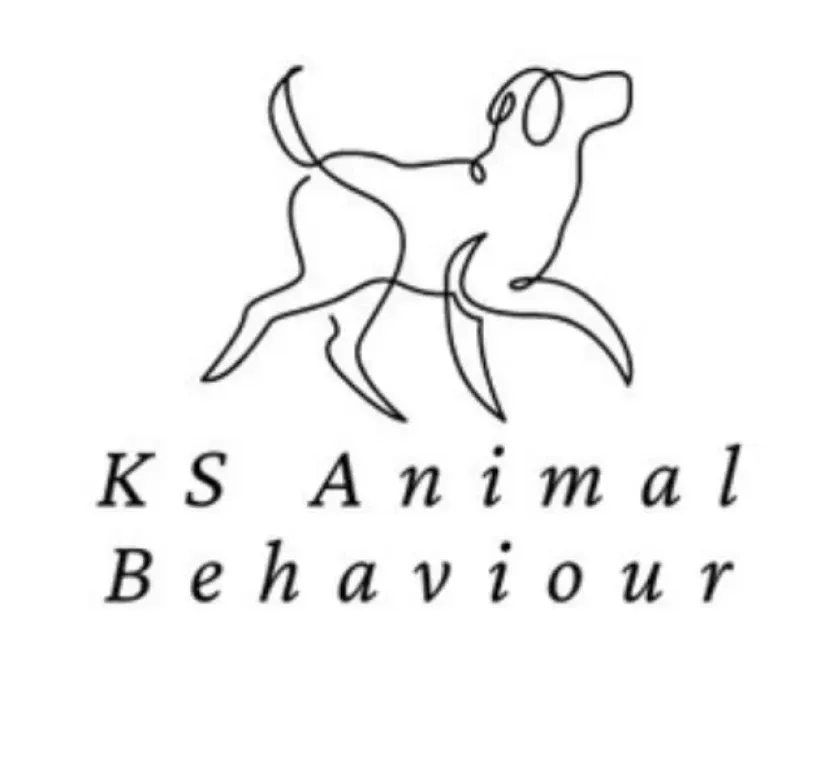
Privacy Policy
Terms of Services
Terms and Conditions of Services
©Copyright 2024 KS Animal Behaviour LLC | All Rights Reserved
